Horatiu Didea, Workspace Studio: Employees today seek more than just a workspace, the era of the beige and greige office is gone
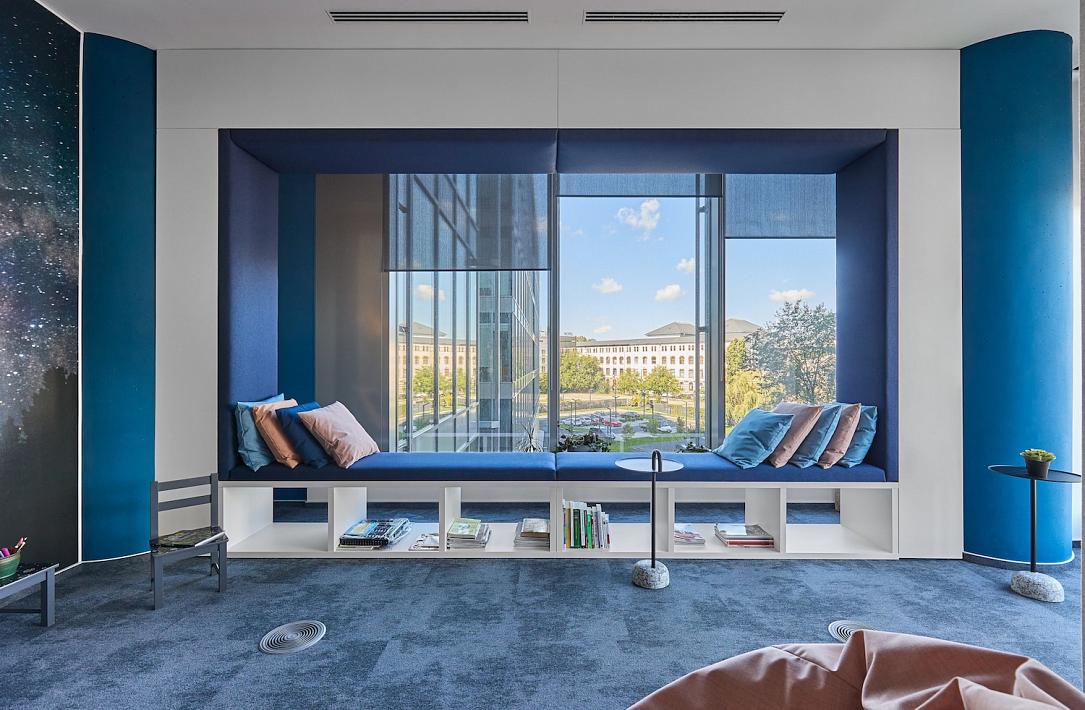


“Modern offices evolve with hybrid and biophilic designs, embracing flexible layouts and smart technology for dynamic, efficient spaces. They prioritize sustainability, mental health, inclusivity, and movement, fostering environments that support diverse work modes and wellbeing,” explains Horatiu Didea.
When designing workspaces, the focus is now on facilitating connection between employees as well as comfort and well-being. At the same time, companies also demand office layouts that can be easily changed and adapted to new needs, with a sustained interest in multifunctional and modular solutions and spaces.
“Employees today seek more than just a workspace; they desire a “destination environment” that blends design and technology with wellness and sustainability. The new workspace must be better than our homes and provide new levels of support for collaboration, socializing, and individual work,” says Didea.
At the same time, the colors used in office design have evolved and diversified, from shades of green symbolizing sustainability to bold neutrals and warm earthy tones, creating spaces that are both inviting and innovative. “Generally speaking, colors are more present nowadays. The era of the beige and greige office is gone.”
Read more in the following Q&A interview:
Can you share some insights on the current trends in office design in Romania? How are these trends influencing your work in office fit-out projects?
Horatiu Didea: The last few years have seen a major shift in how businesses approach their office spaces. With more emphasis on aesthetics, functionality, and employee well-being, 2024 showcases some of the most exciting trends for future-ready workplaces centered on connection, well-being, and change.
Modern offices evolve with hybrid and biophilic designs, embracing flexible layouts and smart technology for dynamic, efficient spaces. They prioritize sustainability, mental health, inclusivity, and movement, fostering environments that support diverse work modes and well-being.
Based on decades of expertise, MillerKnoll, our international partner that Workspace Studio is a Certified Dealer of, has identified shifting priorities that empower companies embracing conscious design attuned to modern needs. While ergonomics and connection areas remain in focus as trends we have seen rising after the pandemic, this year, we also notice a growing orientation towards flexibility, sustainability, technology integration, and simplicity.
As companies have felt the negative effects of remote work on organizational culture and employee engagement, the role of the office has been redefined, primarily becoming a space for connecting with colleagues. Connectivity and collaboration take on different forms depending on the organization, and the office must efficiently respond to multiple types of interactions: idea exchange, mentoring, and onboarding processes, learning, teamwork, work meetings, strategy, or innovation. Therefore, the design of modern offices needs to have an impact on the quality of connection, serving as a catalyst for a superior employee experience in the workplace.
At the same time, the office remains a space for individual work for many employees for whom their own home or third-party spaces are not a desirable option. Therefore, current offices need to integrate areas for concentration or relaxation, providing acoustic comfort and privacy on demand, as well as high-ergonomic workstations. The impact of design can thus be measured in the level of comfort and well-being of employees, with space being a key element in any organization's employee experience strategy.
Last but not least, an important trend crystallizing this year is the adaptability of office layouts to change, even if it involves changes that can be made in minutes, hours, or days. There is sustained interest in multifunctional and modular solutions and spaces.
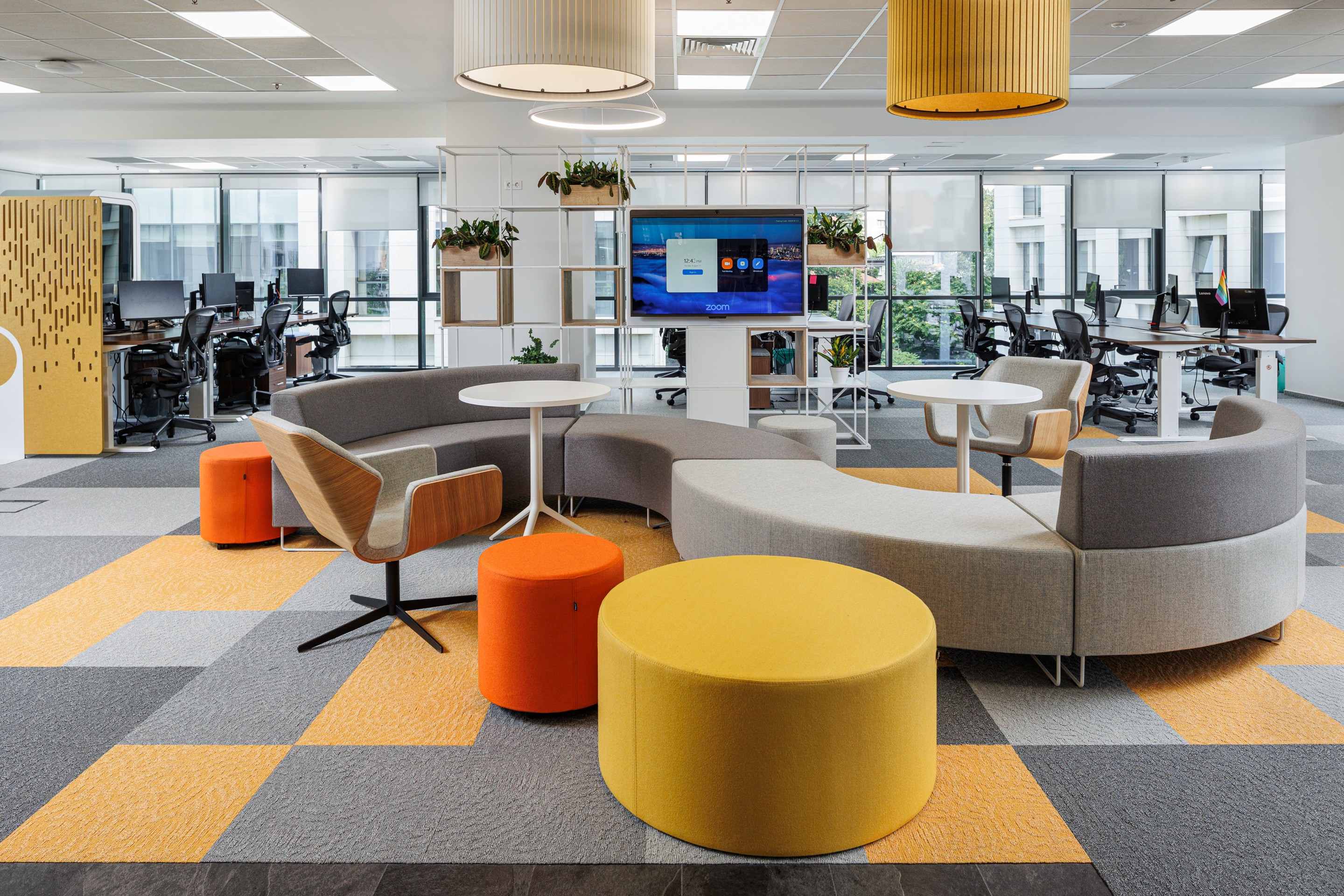
What kind of colors and textures do clients prefer these days for their offices?
Horatiu Didea: Offices embrace a sophisticated mix of tone-on-tone palettes and a variety of colors, from shades of green symbolizing sustainability to bold neutrals and warm earthy tones, creating spaces that are both inviting and innovative. Generally speaking, colors are more present nowadays. The era of the beige and greige office is gone.
Also, aligning the office design with the company's identity enhances brand recognition and fosters a sense of belonging among employees, making them feel part of a cohesive culture. For business partners and clients, the office serves as a tangible representation of the company's values, quality, and professionalism. This physical embodiment of the brand acts as a powerful "visit card," showcasing the services and products in a manner that resonates with the company's ethos and market positioning. Therefore, we usually use colors from the brand book in the office design, but always in sync with a design idea that supports inclusivity and well-being.
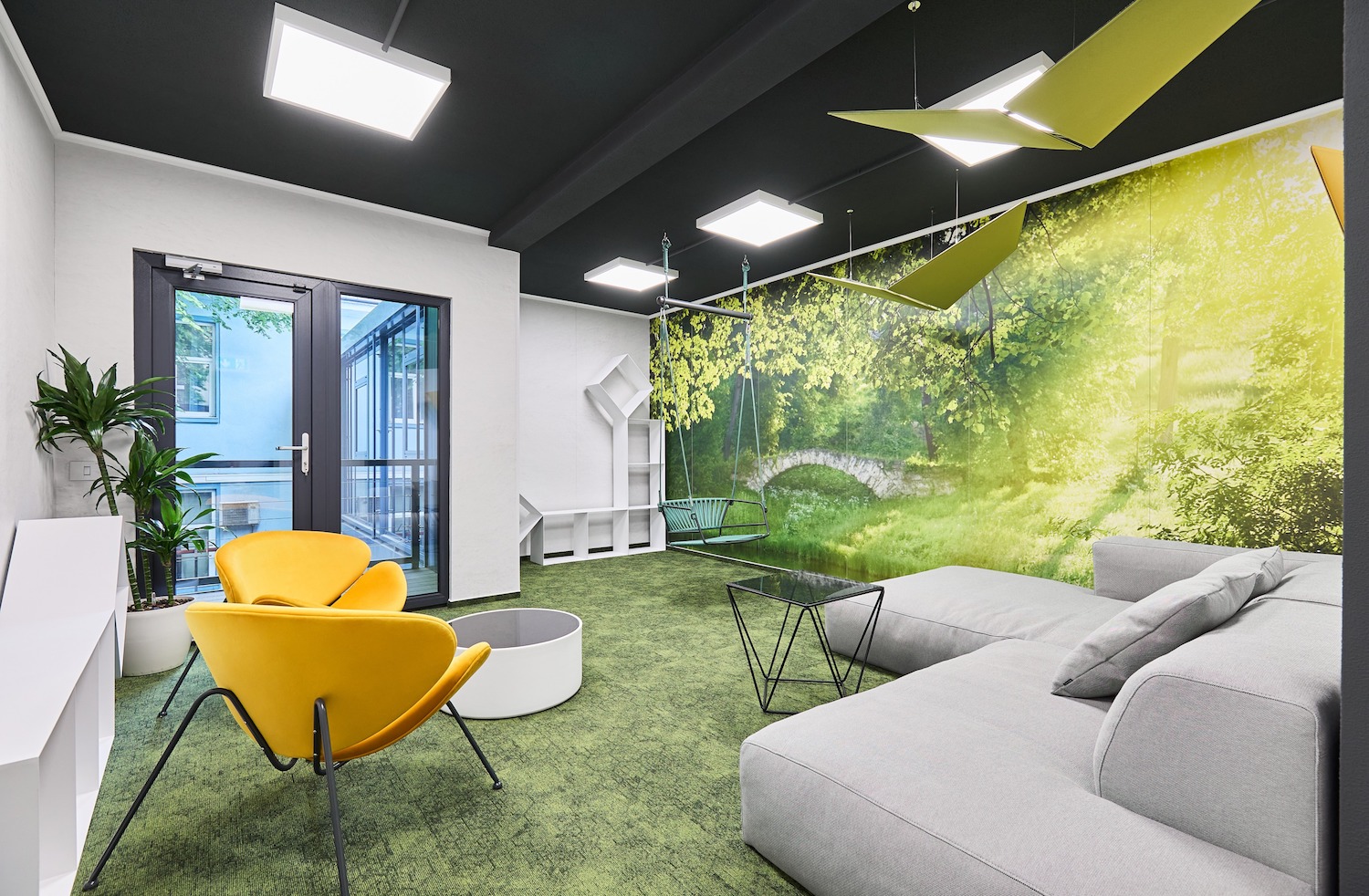
With increasing awareness around sustainability, how is your company incorporating environmentally-friendly solutions in office fit-out projects?
Horatiu Didea: Workspace Studio prioritizes sustainability in office fit-outs by advocating for human-centric design and an environmentally friendly approach.
First of all, we work with manufacturers committed to sustainable production. Our portfolio is focused on the circular economy principle by including in our projects sustainable solutions, such as recycled and biodegradable materials and designs. Some actual examples - many Herman Miller chairs are produced from ocean-bound plastic, and all our acoustic solutions are made from biodegradable or recycled materials – either recycled PET or 100% circular economy plastic, wood, and mycelium.
We also promote longevity by including timeless designs that are never out of style, such as the classical pieces from Knoll. From a sustainable perspective, including products and designs that are durable and timeless reduces the need for frequent replacements and thus diminishes resource consumption.
This approach not only saves materials and energy but also aligns with a sustainable philosophy by minimizing waste and environmental impact over time. It reflects a commitment to crafting spaces and items that endure, supporting a shift towards more responsible and conscious consumption.
When it comes to premium office solutions, what sets your services apart? Can you provide some examples of premium projects you have completed?
Horatiu Didea: Our approach prioritizes high quality in both products and services, reflecting a philosophy that values excellence over mere cost. Representing MillerKnoll, a world leader in contract furniture, also gives us access to their know-how and research, enabling us to offer premium office solutions that coordinate with the latest insights in office design. From the market-leading quality, ergonomics, and timeless design of our brands to the added value of our consultancy, design, customer service, and logistic services, some of our service differentiators in the market are:
We work on turnkey projects with a strategic approach, from understanding the company goals and creating a workplace strategy to designing & building, project management, and implementation in the given timeline. Over the past 10 years, more than 500 corporate clients decided to work with some. We are very proud of all our projects, some of them being OMV Petrom, Adobe, Oracle, Playtika, Philip Morris Electronic Arts, Unilever, Roche, Coca-Cola, Nestle, BAT, Orange, and many others.

Ergonomics is an important aspect of a productive workplace. How do you ensure ergonomic design principles are factored into your office fit-out projects?
Horatiu Didea: Integrating ergonomic design into office fit-outs is essential for creating a productive and comfortable workplace, and it is a trademark of Workspace Studio. We always take into consideration not only physical ergonomics but also cognitive (how we place the visual and IT tools that people interact with) and social ergonomics (the way people interact using the infrastructure).
Ergonomic furniture like the Aeron Chair by Herman Miller, designed with body mechanics in mind, enhances well-being. Also, height adjusting electric desks and flexible monitor arms are part of an ergonomic workstation essentials. Acoustic comfort is also a very relevant part of an office people love to work in. Acoustic booths and acoustic treatment of the walls and ceiling are a must in a modern office.
We are also optimizing layouts to minimize unnecessary movement and integrating zones for different tasks can support both teamwork and individual work, as well as postural variety and
emphasizing comfort through natural light and plants, along with adopting a people-centric design that values employee input, promotes a healthy and engaging work environment. Smart technology further streamlines workflows, making the office a reflection of the company's culture and values, thereby boosting satisfaction and productivity.
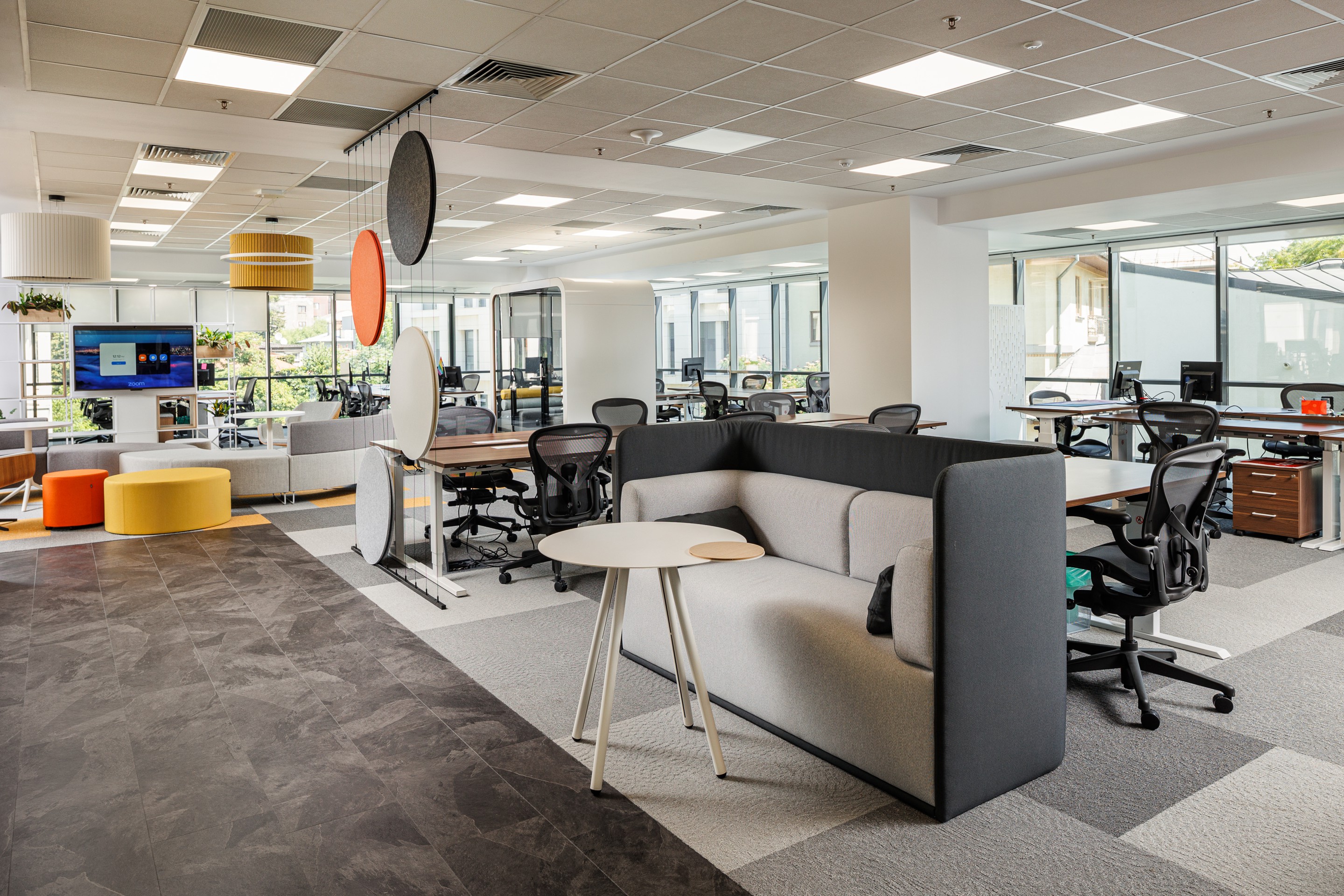
What do employees expect from an office experience nowadays and how do you factor in employees' preferences when designing and planning office spaces?
Horatiu Didea: Employees today seek more than just a workspace; they desire a “destination environment” that blends design and technology with wellness and sustainability. They value ergonomically designed, comfortable furniture and a culture that promotes respect and opportunities for growth.
In a few words, the new workspace must be better than our homes and provide new levels of support for collaboration, socializing, and individual work.
Our approach addresses the human needs of employees to improve their well-being, fosters a sense of community and connection, and helps organizations navigate, prepare, and design for change.
Importantly, flexibility in working hours and locations, alongside spaces that encourage learning, connection, and the exchange of ideas, become increasingly sought after. These elements are fundamental to not only fulfilling functional needs but also boosting overall well-being and productivity in the modern office.
A global survey of desk-based workers shows that they expect flexibility in where (81%) and when (93%) they work. When they get it, they feel more focused and productive. Yet the vast majority (85%) want the option to come to a physical workplace (Source: Future Forum Pulse, February 2023).
Also, employees recognize the benefits of being together. To maximize those benefits—for employees and their organization—their workplace needs to provide spaces optimized for what they want to do there. This ranges from spaces to collaborate, meet, socialize, and receive mentorship, to quiet spots for heads-down focus. Our approach is always personalized and aligned with each company’s culture, workflows, and employee experience strategy.
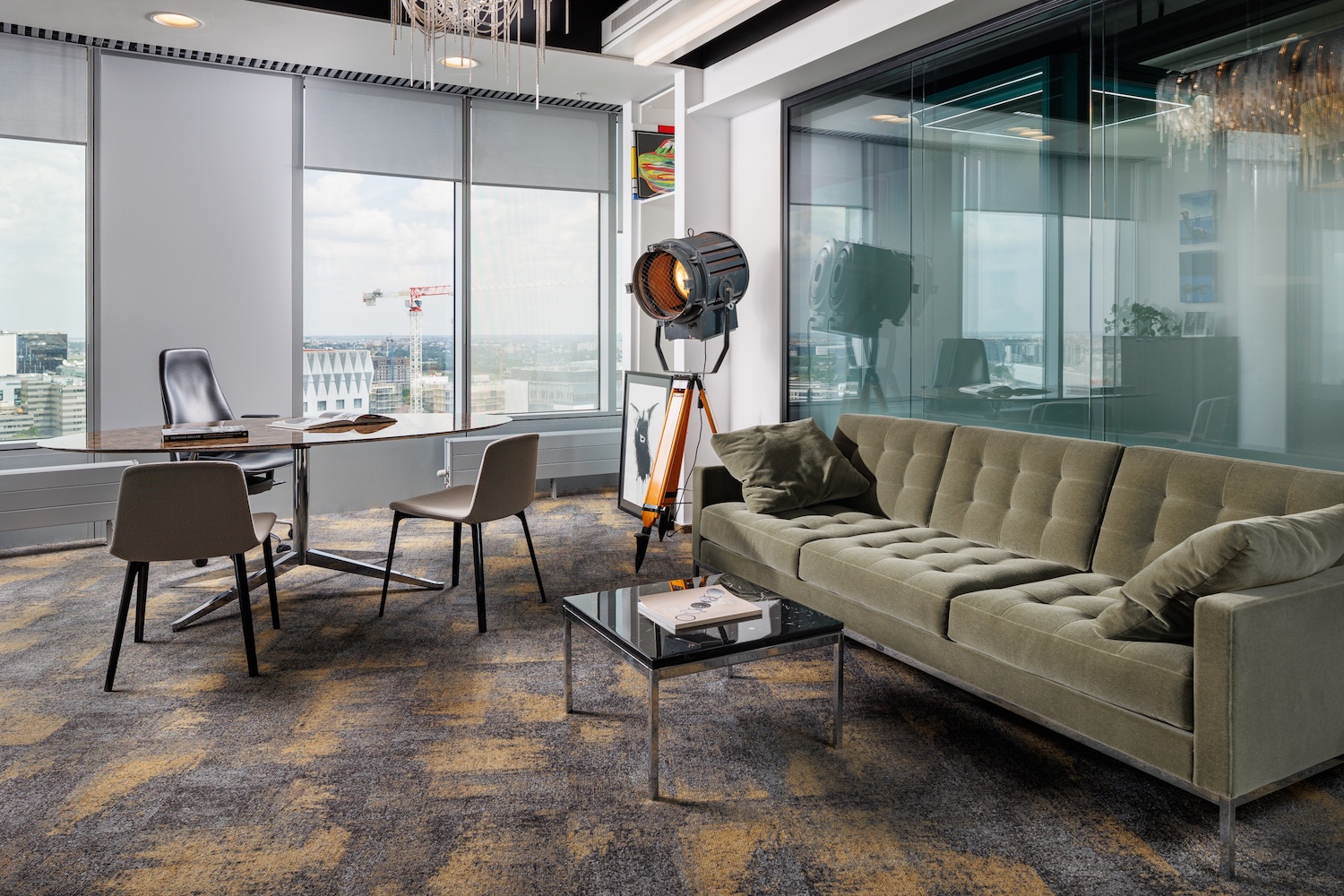
With the shift in the nature of work and increased remote working, how is your approach to office fit-out adapting to accommodate these changes?
Horatiu Didea: Due to companies' need to provide employees with attractive office spaces, with a strong emphasis on design and physical as well as social ergonomics, the orientation towards premium quality and multifunctionality solutions maintained in 2023. Office spaces are smaller, but better. Thus, diverse and experiential design, space flexibility through partitioning solutions with sound insulation and superior technical features, and sustainability integrated into interior architecture solutions represent central aspects in all recent Workspace Studio setups, directions that remain visible in 2024 as well.
How did Workspace Studio’s turnover evolve after the pandemic?
Horatiu Didea: In 2023, Workspace Studio Group, specialized in high-quality office furniture and turnkey office refurbishment projects and a Certified Dealer of the MillerKnoll group in Romania, strengthened its position as a provider of premium office design solutions, maintaining its turnover constant at EUR 22.5 million, a level also achieved in 2022. Turnkey projects generated 60% of revenues, with approximately one in two projects being refurbishments of existing spaces.
__
*This interview was edited by Romania Insider for Workspace Studio.